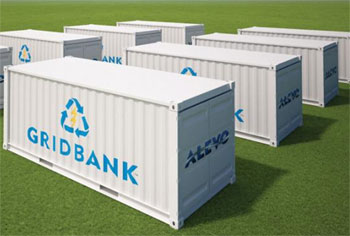Last week, the White House held a “Summit on Scaling Renewable Energy and Storage with Smart Markets.”
Utilities, regulators and municipalities that are pushing renewable energy forward met to figure out how they can rapidly scale a clean grid, cost-effectively, by advancing energy storage and demand management.
The Summit ended with commitments to deploy at least 1.3 gigawatts of energy storage in the next five years, an investment of about $1 billion.
“Energy storage can make the electricity system more flexible and ready to use renewable generation that has variable output, like wind and solar. Storage with advanced communication and controls can even offer the prospect of providing the grid with “ancillary services” like frequency regulation and load following, reducing the costly need for power plants to quickly ramp up and down as total energy consumption changes during the day,” explains Robin Roy of Natural Resources Defense Council (NRDC), one of the participants.
The focus is on installing batteries at peoples’ homes and businesses and driving down the costs, and making use of existing water heaters and electric vehicles (EVs), for example. For EVs, only smart communication controls would be needed to send electricity to grid during charging.
Electric water heaters can also be connected to the grid with communication controls that allow utilities to turn them into low-cost thermal batteries. Water is heated when power is cheaper.
500 megawatts of energy storage is installed in the US, doubling over the past year.
While energy storage is crucial to modernizing the grid, it isn’t the only way to scale renewable energy. According to NOAA, moving from a regional to a national grid with high-voltage direct-current transmission (HVDC) would allow us to take advantage of where the sun shines or the wind blows at any given moment.
An example of what large scale batteries look like:
Details on What’s Next
To begin using energy storage in the federal government, the General Services Administration (GSA) will explore energy storage for buildings for emergency back-up (potentially to replace diesel generators); to enhance resiliency, and for demand response management of peak loads.
The Navy’s Renewable Energy Program Office is contracting with developers for several grid-scale battery projects, and in an innovative application, it will turn its fleet of decommissioned submarine batteries into distributed energy resources.
The Air Force Resilient Energy Demonstration Initiative is also embarking on similar projects. The “Forward Operating Base of the Future” project in San Antonio is integrating renewable energy, energy efficiency, and energy storage in a simulated deployed environment, expected to reduce power needs by over 85%.
National Renewable Energy Laboratory (NREL) will release a study this summer on how the Eastern Interconnection can operate with 30% wind and solar. The model will provide visualization tools for researchers and developers with better resolution that ever before. Lawrence Berkeley National Lab released a similar study for California’s grid.
16 leading grid operators, utilities and community organizations in eight states announced storage projects, procurement targets, pilot projects, and partnerships.
Utility Pacific Gas & Electric (PG&E), for example, is investing about $3 billion a year through 2020 to make the grid more resilient and integrate distributed solar, energy storage, electric vehicles and other low-carbon technologies.
Portland General Electric will implement a communication interface for smart water heaters that connects them to the grid, A new report by the White House Council of Economic Advisers on the technical and economic considerations and opportunities relating to the grid integration of renewable energy resources.and with Bonneville Power Administration, replace the region’s 3.5 million water heaters with smart water heaters that act as inexpensive batteries. A pilot is launching next year on a mass-market water heater program.
On the private sector side, 17 companies and investors announced pilot projects.
Energy Impact Partners LP, for example, will invest up to $30 million in energy storage startups, and Hannon Armstrong will invest up to $100 million in commercial scale, proven energy storage projects in buildings this year. Microsoft and Primus Power will implement a pilot program to advance energy storage at all of Microsoft’s data centers around the world.
Vaughn Thermal Corporation is introducing a leasing model for advance water heaters to get them into homes without an upfront cost.
Read the report by the White House Council of Economic Advisers, Incorporating Renewables Into the Electric Grid: Expanding Opportunities for Smart Markets and Energy Storage.
Read our article, Energy Storage: The Next Big Innovative Technology.
Here’s the White House fact sheet on all the commitments: https://www.whitehouse.gov/the-press-office/2016/06/16/fact-sheet-obama-administration-announces-federal-and-private-sector

